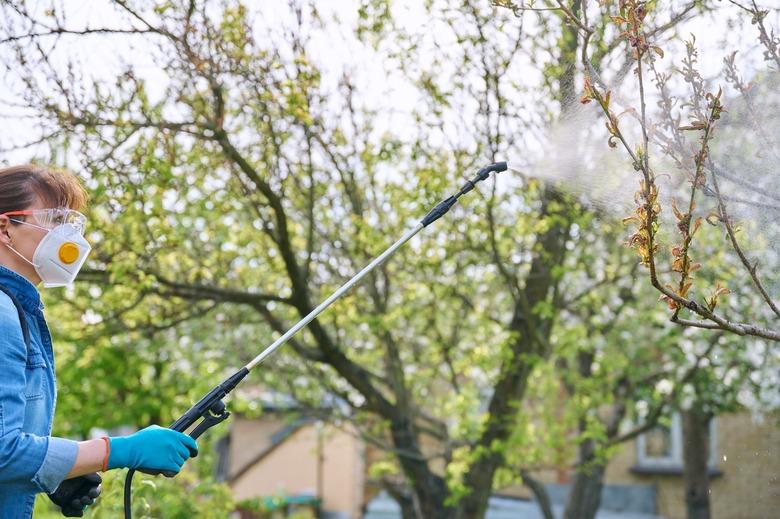Best Times To Spray Fruit Trees
Spraying fruit trees is a standard practice that helps gardeners control plant diseases and insect pests in the backyard orchard. Many products are available in commerce, including those appropriate for organic gardening. Whatever types of sprays you prefer, it is important to set a spray schedule and make it an annual routine.
Horticultural Dormant Oil
A good fruit tree spray routine begins while the trees are still dormant in winter. Applying a horticultural dormant oil as winter ends helps protect trees from overwintering pests, larvae, and eggs. Don't stint on the spray; the entire tree should be coated thoroughly according to the specific label directions of the product. Use it when temperatures are above 40 degrees Fahrenheit.
Which trees will benefit from this spray? It will protect many different fruit trees from different insect pests. This winter spray takes out scale, mealy bugs, aphids, mites, and pear-psylla on apple trees, pear trees, pie cherry trees, and grape vines. It also helps remove a variety of overwintering pests on dormant plum trees, peach trees, blueberry plants, strawberry plants, apricot trees, and pecan trees.
Fire Blight Spray
Generally, sprays are most effective when the trees are not in bloom. But with the bacterial disease fire blight that strikes apple and pear trees, spray application must be done while flowers are on the tree. This contagious, systemic, bacterial disease attacks the blossoms first and does so in early spring before launching a full-scale attack on the twigs and branches, leaving them with a scorched, blackened appearance.
Blossoms wilt and die in about two weeks' time. That makes spring bloom time the optimal moment for effective fire blight prevention, but act early in the day or late in the evening to avoid injuring beneficial insects. Use a disease-specific product that contains streptomycin sulfate.
Copper Fungicide Spray
Once the petals fall from the trees in your home orchard, that's the time to apply copper fungicide. Copper-based fungicide is appropriate for use in organic gardening, and it controls fruit tree issues like blights and mildew. Specifically, it controls brown rot blossom blight, downy and powdery mildew, peach leaf curl, fire blight, rust, and leaf spot.
Apply just after petal drop to apple trees, pear trees, apricot trees, cherry trees, grape vines, and strawberry plants. Buy a ready-to-use product and follow label instructions.
Pest and Disease Control Sprays
The big disease push arrives once pollination is over. Wait until every petal has dropped to avoid spraying beneficial pollinators that could still be visiting flowers. And try to spray at dawn or twilight to avoid contact with passing bees. Get started with sprays to fight pests and diseases before daytime temperatures rise above 80 degrees.
These sprays are also known as growing-season sprays, and you'll find many on the market. Use organic options to the extent possible. Use an organic fungicide spray to combat fungal issues on fruit and nut trees, ornamentals, trees, shrubs, flowers, and tropical plants. Neem oil is a popular organic insecticide, miticide, and fungicide for fruit trees and berry plants. Whatever products you choose, be sure to read and follow the directions on the labels.
